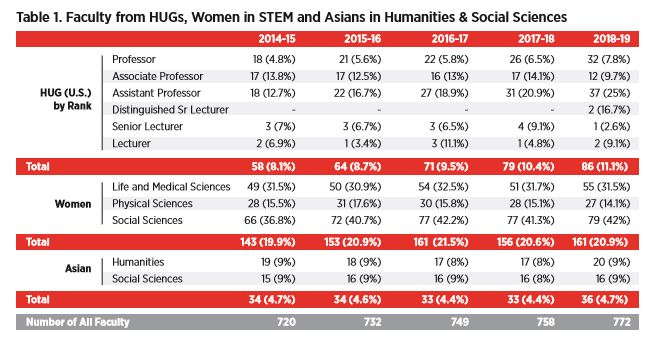
PROVIDENCE – Brown University continued to increase the number of its faculty, staff and graduate students from historically underrepresented groups, according to the university’s annual progress report on its “Pathways to Diversity and Inclusion” action plan.
The update on the plan, launched in 2016, noted that 26% of faculty hired in 2017-2018 identified as members of historically underrepresented groups, or HUGs. At the same time, 32% of incoming graduate students and incoming 26% medical students last fall were from HUGs.
The 21-page report also said Brown has designated 126 courses in which students can examine topics related to race, gender and inequality.
“We are proud of the progress to date and remain committed to doing the work required to meet the stated goals in the [diversity and inclusion action plan],” Shontay Delalue, Brown’s vice president for institutional equity and diversity, said in a letter accompanying the report. “We recognize there is still a great deal of work that remains to be done, as we continue to become aware of new and emergent needs within our community.”
Launched in February 2016, the “Pathways to Diversity and Inclusion” action plan seeks to increase diversity at Brown in six areas: people, academic excellence, curriculum, community, knowledge and accountability.
The university has undertaken numerous initiatives aimed at recruiting faculty members from HUGs. Those efforts have included reviewing and updating recruitment practices, implementing data-driven strategies for faculty searches and enhancing training on unconscious bias for search committees.
The new report said 11.1% of the Brown faculty this academic year were from HUGs, up from 8.1% in 2014-2015, before the action plan was implemented. That’s an increase of 28 HUG faculty members since 2014-2015.
Eighteen women – a gain from 143 to 161 – have been hired for faculty positions in science, technology, engineering and math, or STEM fields, at Brown in the same period.
The percentage of women among the school’s STEM faculty has remained around 20% since 2014-2015.
Likewise, the number of Asian faculty members in the humanities and social sciences has remained flat at just under 5% in the last five years, according to the report.
Brown has seen a steady rise in the number of HUG graduate students, climbing from 196 – or 9.4% of the graduate student enrollment – in fall 2014 to 353 – or 13.7% of enrollment – in fall 2018.
Meanwhile, 132 students enrolled in Brown’s Alpert Medical School – or 22.6% – identified as part of a HUG in fall 2018. While that’s an increase of 12 students since the fall of 2014, it represents a decrease in the percentage of all HUG medical students.
The report also said that the class of first-year medical students this academic year is the most diverse to date, with 26% of those who are United States residents identifying as HUG members.
At the same time, while the number of HUG undergraduates has climbed by 120 students from fall 2014 to 1,424 students in fall 2018, the overall percentage of HUG students has remained at about 21% in recent years.
William Hamilton is PBN staff writer and special projects editor. You can follow him on Twitter @waham or email him at hamilton@pbn.com.











